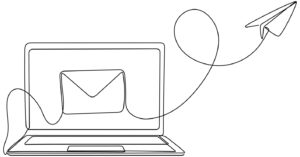The right way to use quotation marks in AP style
You should probably be using them both more, and less, than you think.

Quotation marks seem straightforward. If you’re recounting exactly what someone else said, it should be in quotation marks. Easy, right?
That part is simple enough. But where does the punctuation mark go in a quote? What if it’s a quote within a quote? Do you ever use single quotes? What if it’s an unfamiliar word? Are there exceptions?
There are a lot of rules for quotation marks in AP style, but overall, they are enforced consistently. If you can remember a few rules of thumb, you’ll be a quotation pro in no time.
How to quote people
Double quotation marks – “that’s these guys” – go around words that are being reproduced exactly as they were spoken or written. Each speaker gets their own set of quotation marks.
Most punctuation goes within the quotation marks if it applies to the quote. For example:
- “What time is the parade?”
- “The parade is soon!”
- “I do not like parades.”
- “You’re no fun,” he said.
However, if you have a punctuation mark that applies to the broader sentence and not the quote specifically, it goes outside the marks, like so: Did he say, “I don’t love you”? In this example, “I don’t love you” is a statement, not a question, so the question mark goes outside the quotation to show that the entire sentence is interrogatory.
If a single quote spans more than a paragraph, don’t use quotation marks at the end of the first paragraph, but do add them to the second paragraph:
“Four score and seven years ago our fathers brought forth on this continent, a new nation, conceived in Liberty, and dedicated to the proposition that all men are created equal.
“Now we are engaged in a great civil war, testing whether that nation, or any nation so conceived and so dedicated, can long endure,” Abraham Lincoln said in the Gettysburg Address.
However, if you’re quoting a very long passage like an excerpt or a complete work, no quotation marks are necessary if it’s set off as a block quote.
When to use single quotation marks
The quotation mark’s skinnier sister, the single quote, is more commonly known as the apostrophe (‘these guys’). It isn’t used very often in AP style, but there are some times when using it is necessary.
Single quotation marks should be used for quotes in headlines as a space-saving measure.
If you’re quoting someone who’s quoting someone, switching to single quotes for the secondary quote avoids confusion: “As a wise man once said, ‘ain’t that a kick in the head?’” You’ll also use the single quote when quoting someone who’s using a composition title: “I’m watching ‘The Great Pottery Throwdown,’” she said.
If you have a quote within a quote within a quote, keep alternating between double and single quotes.
Composition titles
You may be tempted to put books, movies, TV shows and other media names in italics. This is likely a holdover habit of using APA or Chicago Style on school papers. However, AP style very rarely uses italics, as old-style wire machines couldn’t process them. While you’re generally fine using italics for emphasis, quotation marks are still the correct choice for titles of most works of art, including books, movies, computer games, operas, plays, poems, radio, TV and podcast programs, speeches and visual art.
Exceptions include holy books such as the Bible or Quran, reference books like dictionaries or encyclopedias, and, weirdly, software titles like Microsoft Office.
Other times to use quotation marks
Some people love sprinkling in quotation marks for emphasis, or in business writing, sometimes to highlight a word that seems casual. You don’t need to do this. There are a few other times to use quotation marks:
- Nicknames: When introducing someone by both a proper name and a nickname, put the nickname in quotes: Jake “The Snake” Smith. You don’t need to use quotes if it’s a common shortening of a name, like Jake instead of Jacob. Just use the name they prefer to be called.
- Foreign or unfamiliar words: Some foreign words have become so integrated into the English lexicon that we don’t even think of them as foreign: tsunami, bon appetit. But when a word is unfamiliar to a general audience of English speakers, you may use quotation marks to identify the word before defining it: “pamplemousse,” the French word for “grapefruit…” You may also consider doing the same with slang or technical words that your audience might not be familiar with. However, some are urging a move away from calling attention to foreign words by framing them in quotes.
- Irony: Just like air quotes in real life, you’re fine with using quotation marks for sarcasm: “Did you have fun at the party?” “’Party.’ More like a wake.”
As you’re working on your communications strategy, remember that you can tweak AP style to meet your needs. As long as your style remains consistent enough to continue reaching your intended audience, you’re just fine.







